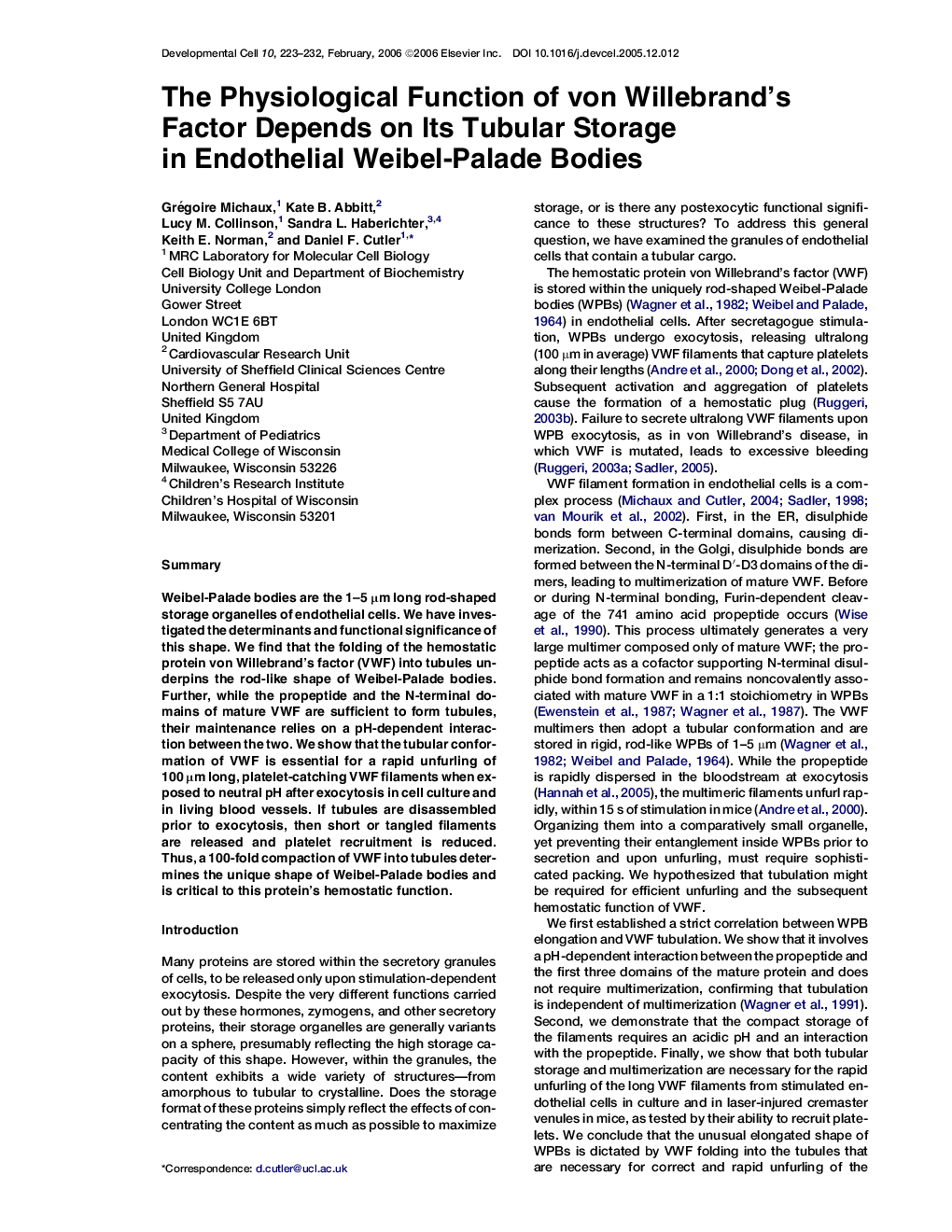| Article ID | Journal | Published Year | Pages | File Type |
|---|---|---|---|---|
| 2177874 | Developmental Cell | 2006 | 10 Pages |
SummaryWeibel-Palade bodies are the 1–5 μm long rod-shaped storage organelles of endothelial cells. We have investigated the determinants and functional significance of this shape. We find that the folding of the hemostatic protein von Willebrand's factor (VWF) into tubules underpins the rod-like shape of Weibel-Palade bodies. Further, while the propeptide and the N-terminal domains of mature VWF are sufficient to form tubules, their maintenance relies on a pH-dependent interaction between the two. We show that the tubular conformation of VWF is essential for a rapid unfurling of 100 μm long, platelet-catching VWF filaments when exposed to neutral pH after exocytosis in cell culture and in living blood vessels. If tubules are disassembled prior to exocytosis, then short or tangled filaments are released and platelet recruitment is reduced. Thus, a 100-fold compaction of VWF into tubules determines the unique shape of Weibel-Palade bodies and is critical to this protein's hemostatic function.
